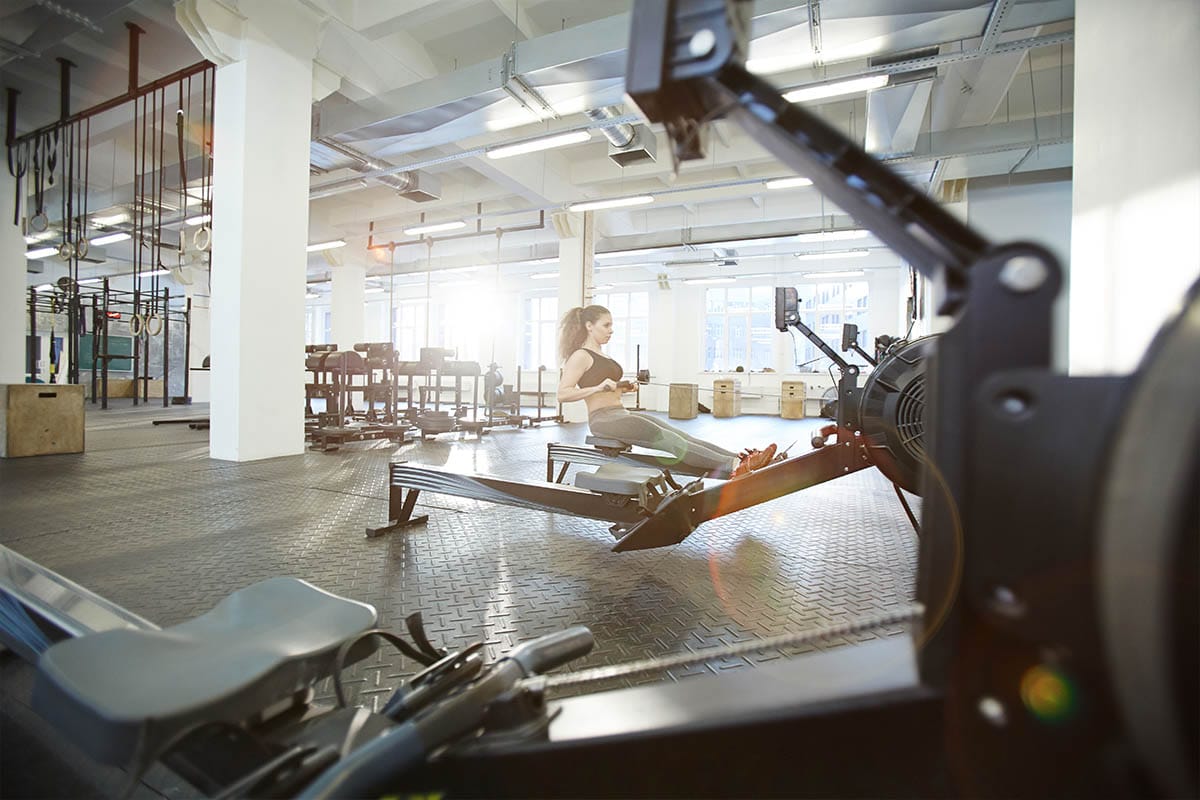
Have you just given birth or still allowing your body to recover post-pregnancy? Diastasis Recti is a common condition which many women would be facing during this period of time. It is a condition that affects the abdominal wall as commonly throughout the pregnancy, and one would experience the left and right belly muscles being widened or stretched. Even though it has an odd name, it is not a harmful or dangerous condition, so there is no need to worry.
On the other hand, Diastasis recti might be aesthetically unpleasant as it causes your stomach to stick out, giving the impression that you are still pregnant. Additionally, complaints of back pain, pelvic instability, and other side effects may occur due to the condition. Fortunately, diastasis recti can be fixed through plastic surgery called a tummy tuck. To learn more on how to cure diastasis recti, read our You can also improve it by physical exercise or therapy that involves core strengthening exercises.
Here we will share with you all the important facts you need to know about diastasis recti and how you can deal with this issue.
Diastasis recti refer to a condition in which the left and right sides of the stomach are separated. In short, there are different names to address this condition, such as diastasis recti abdominis, ab separation, and recti divarication. Women often called it “pooch” or “mommy’s tummy”.
The condition is most frequently seen in pregnant women. However, men, older women and infants may also experience such a problem.
Depending on the specific circumstance, there may be partial or complete separation of six-pack muscles (rectus abdominis). It can give the appearance of a protruding belly are and lead to unpleasant complications like pelvic pain and back pain.

Diastasis recti abdominis is usually a result of excessive inner-abdominal pressure. The condition most frequently affects pregnant women and postpartum women.
The belly area stretches naturally during pregnancy to provide space for the growing uterus. This, in turn, leads to the expansion of the linea alba (the connective tissue holding the recti muscles together). It usually happens during the third trimester and may remain after delivery. In addition to the expanding uterus, the hormone changes that occur during pregnancy also contribute to the expansion of the connective tissue and preparation for the growing baby.
The other risk factors that can increase the chance of experiencing muscle separation include having twins or a larger baby, going through a pregnancy over the age of 35 or birth by caesarean section.
Diastasis recti abdominis in men can be caused by improper performance of exercise and excessive weight lifting. Newborns usually develop the condition due to a relative weakness in the fascia between the two recti muscles.
You can simply check if you have rectus abdominis muscles diastasis by following these steps:
Diastasis recti can also present with the following signs:
If you think you might have muscle separation it is best to consult a doctor.
If you have excess fat on your stomach, you will need to lie face up with your knees bent and press your fingers firmly into the midline to check for diastasis recti. Your head and shoulders will also need to be lifted off the ground to engage your muscles and take more accurate measurements. Then, determine how wide and how deep is the separation of your muscles. Any gap larger than 2.5 cm indicates diastasis recti abdominis.
If you suspect you have diastasis recti, it is best to consult a doctor or physical therapist. Typically, a specialist will use a special tool called ultrasound to take the measurements, determine whether you suffer from this condition and how severe it is.
If you have an abdominal gap that is greater than 5 cm, then your diastasis recti might be considered severe. In such cases, the condition may cause complications like back pain, pelvic pain, unstable core and ab muscles, poor posture and others.
Additionally, the progression of the disease may lead to intestinal motility disorders and nausea. 66% of women with postpartum aponeurosis stretching also experience pelvic floor muscle dysfunction, which manifests clinically as urinary incontinence during coughing and sneezing. Extreme cases of diastasis recti may be accompanied by atrophy of the abdominal muscles and hernia.
After giving birth, wait at least 6 weeks before testing for rectus abdominis diastasis. Once you’ve gone through this period, you can more accurately determine how severe the condition is.
Almost all women experience diastasis recti, to some degree, during their pregnancy or immediately after childbirth. However, the condition may resolve spontaneously in the first 1 to 2 months after delivery. For this reason, it is best to wait a few weeks before testing for diastasis recti. Also, ensure that you are not taking measurements right after eating or when you are feeling bloated because it might affect the results.
The rectus muscle can return to its original position after birth when your hormone levels return to those before you became pregnant. If this doesn’t happen within three to six months, then your ab muscles won’t restore without treatment.
Some exercises that are specifically designed to target abdominal muscles and strengthen the deep, transverse abdominis may be helpful. If recti exercises do not lead to the desired results, then surgery like tummy tuck might be necessary. Men who have separation of the abdominal muscles may also benefit from such an operation. Diastasis recti in babies usually resolve on its own.
How to cure diastasis recti? It can be corrected through physical therapy that includes proper diet and exercise or with plastic surgery called tummy tuck or abdominoplasty. The treatment plan will depend on the severity of the condition.
If you only have a small gap (around 2-2.5 cm) between your abdominal muscles, then conservative management, like a proper exercise regimen, is a good option. Among the best core exercises are pelvic braces, closing the gap, chair position, toe dips, bird dog, and other exercises that target the abdomen. Make sure you see a specialist before you start exercising.
Mild diastasis recti (a gap between 2.5 and 4 cm) may also be improved through the pelvic floor and deep stomach muscles exercises. Maintaining a healthy, balanced diet might also be helpful.
A diastasis recti that is severe and the abdominal gap exceeds 4-5 cm can be corrected through plastic surgery. A tummy tuck or abdominoplasty involves tightening and reattaching separated abdominal muscles.

In most cases, diastasis recti after pregnancy can be treated with exercises that strengthen deep core muscles and pelvic floor muscles. They should be done under the guidance of a physical therapist. Patients with more severe cases may need tummy tuck surgery to tighten the abdominal wall and repair the separated muscles. This procedure can be performed six months after delivery.
Some of the exercise types that may be helpful include transverse abdominal activation, stand up brace heel slides, stand up brace marching, and stand up brace single knee extension. It is also important to practice breathing and good posture. It is recommended to avoid any strenuous exercises, heavy lifting or performing planks, sit-ups or crunches. It is best to seek the advice of a certified personal trainer. Also, be sure to seek physician approval before beginning any exercise postpartum.
Having a balanced diet combined with a regular workout regimen may help you fix diastasis recti, if your condition is not severe. The following foods may be beneficial:
It depends on the severity of the condition. In the case of mild diastasis recti, it could take between six and twelve months postpartum. It is possible that some women will need more time, longer than 12 months.
Generally, a diastasis recti can be considered close if the following conditions apply:

If used correctly, rowing machines are safe and beneficial for people with diastasis recti abdominis. You should not lose core engagement or feel any doming or pooching when you lean back too far.
Yes, planks can be bad for abdominal separation. They can make things worse.
The chiropractors can help you resolve your diastasis recti symptoms. They can give you suggestions on what physical activities you should do and what you should avoid. Additionally, they can teach you how to engage your deep core muscles through proper posture and breathing, as well as what exercises you should perform to strengthen them.
Yes, severe cases of diastasis recti abdominis can lead to complications like stress incontinence, digestive disorder, constipation and urine leaking.

Yes, you can do squats safely with diastasis recti. Certain variations of squats can actually increase core strength.
It is better to avoid doing push-ups if you have diastasis recti abdominis because such exercise may additionally stretch the connective tissue.
It is recommended to avoid running as it may hinder the healing process.
Belly binding can speed up the healing process as it holds the stomach muscles together. But even though it can improve the condition, it cannot resolve severe abdominal separation.

Dr. Shenthilkumar Naidu (Dr. Shens) is a Ministry of Health accredited Consultatn Plastic Surgeon with extensive expertise in cosmetic and reconstructive surgery. He is renowned for his advanced techniques in body contouring and aesthetic enhancements. For more information, visit Shens Clinic.
Monday – Friday: 09:00am – 06:00pm
Saturday: 09:00am – 02:00pm
Sun and PH: Closed
(Strictly by appointment only)

Copyright ⓒ Shens Clinic | Privacy Policy | Terms and Conditions .